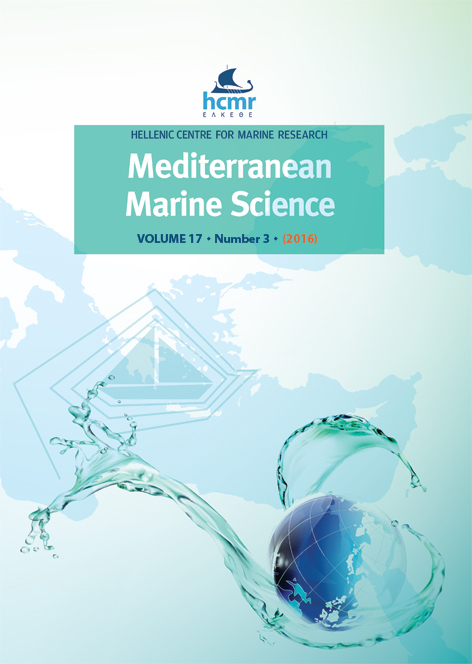Population dynamics and secondary production of Donax trunculus (Mollusca, Bivalvia) in the Gulf of Annaba (Northeast Algeria)
Abstract
The population dynamics and secondary production of the wedge clam Donax trunculus were studied in the Gulf of Annaba (Northeast Algeria) monthly for one year at a site close to the Annaba port and the Seybouse river, affected by industrial and agricultural pollution (Sidi Salem), and at a site more distant from major pollution sources, but exploited by fishery (Echatt). The number of individuals (N) was lower at Sidi Salem (36–148 ind m-2) than at Echatt (63–272 ind m-2) in most sampling dates, while the biomass was more variable from one date to another, with no consistent pattern of differences between sites. The condition index (CI), although slightly higher at Sidi Salem than at Echatt, showed at both sites a major increase in March/April, June/July and October, reflecting two main periods of gonads development and increase in the level of stored reserves at the end of the reproductive period. Consistently, the recruitment of D. trunculus ran from April to October with a major peak of abundance in spring and a minor one in early fall. The maximum age of D. trunculus was 3 years and the growth rate was highest in the first year. Annual somatic production (P) was lower at Sidi Salem (0.773 g AFDM m-2 yr-1) than at Echatt (1.262 g AFDM m-2 yr-1), possibly reflecting a lower mean annual biomass at Sidi Salem (1.642 AFDM m-2) than at Echatt (3.046 AFDM m-2), while the annual P/B ratio was similar between the two sites (i.e. 0.471 and 0.414 yr-1, respectively). Lower N and P at Sidi Salem compared to Echatt are consistent with the proximity of Sidi Salem to the industrial port of Annaba and low hydrodynamic conditions which may favor the accumulation of pollutants, such as hydrocarbons. On the other hand, moderate secondary production of D. trunculus at Echatt compared to other Mediterranean sites may be due to excessive harvesting. We suggest that the low secondary production described in this study should be taken into account for the development of sustainable strategies of clam exploitation in the Gulf of Annaba. In particular, effort should be made to reduce land-based pollution and to regulate the collection of D. trunculus according to the life cycle and production potential of this species.
Article Details
- Come citare
-
HAFSAOUI, I., DRAREDJA, B., LASOTA, R., COMO, S., & MAGNI, P. (2016). Population dynamics and secondary production of Donax trunculus (Mollusca, Bivalvia) in the Gulf of Annaba (Northeast Algeria). Mediterranean Marine Science, 17(3), 738–750. https://doi.org/10.12681/mms.1760
- Fascicolo
- V. 17 N. 3 (2016)
- Sezione
- Research Article
Authors who publish with this journal agree to the following terms:
- Authors retain copyright and grant the journal right of first publication with the work simultaneously licensed under a Creative Commons Attribution Non-Commercial License that allows others to share the work with an acknowledgement of the work's authorship and initial publication in this journal.
- Authors are able to enter into separate, additional contractual arrangements for the non-exclusive distribution of the journal's published version of the work (e.g. post it to an institutional repository or publish it in a book), with an acknowledgement of its initial publication in this journal.
- Authors are permitted and encouraged to post their work online (preferably in institutional repositories or on their website) prior to and during the submission process, as it can lead to productive exchanges, as well as earlier and greater citation of published work (See The Effect of Open Access).






